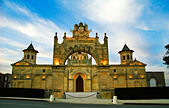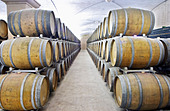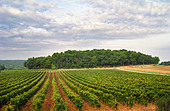—

Please note: this newsletter has been imported to the archive from our old site. Formatting and images will not display correctly! Links will in many cases be outdated!
—
|
||||||||||||
| News from BKWine | ||||||||||||
| “World’s Best Wine Tours” – Travel + Leisure Magazine, on TravelAndLeisure.com
BKWine offers you two possibilities to go wine travelling this autumn:
For more information please contact us on email or on phone (we’re on French time). Visit our video channel https://www.youtube.com/bkwine to meet some of the producers we visit. Visit our brand new wine travel site on www.bkwinetours.com! What do people think about a wine tour with BKWine? That is of course a question that we think is very important. We want it to be a wonderful and memorable experience for everyone. Here are some of the comments we’ve had from customers this season:
Custom wine tours You’ll get a tour designed exactly according to your requirements and tastes, made by one of the most experienced wine people in the business. We personally visit some 200 wineries and taste thousands of wines every year; we write on wine for various wine magazines (we had more than 30 articles published last year); in 2007 we published a ground breaking book on the wine of the Languedoc and in 2009 we published a book on vine growing and wine making – unique in its kind. And we have organised hundreds of wine tours over the years. More info on the custom designed and bespoke BKWine wine tours and travel here! Wine tours in Finnish More info on the Finnish wine tours here: Viinimatkoja |
||||||||||||
| Recommendations | ||||||||||||
| A selection of what we have tried, tasted or visited recently. □ Producers
Domaine des Terres Dorées, Beaujolais Jean-Paul has 30 hectares, all organic, and 11 of them are in Beaujolais Cru, in Brouilly, Moulin à Vent and Fleurie, some 300 kilometres from Charnay. ”Up there, in the northern part of Beaujolais”, says Jean-Paul, ”the granite soil gives more minerality to the wine compared to the lime stone soil here”. He is also unusual in another way. He makes a lot of white wine. This is a very good region for chardonnay, he thinks. If you see his wines, red or white, don’t hesitate. Buy. Click here for address and more recommendations. Read about more recommended producers on the site: Favourite Producers □ Wine Bars and Restaurants Montpellier: In Vino Veritas, Montpellier Click here for address and more recommendations. Read more recommendations on restaurants and wine bars on my Restaurant and Wine Bar page. |
||||||||||||
| News from the Wine World | ||||||||||||
| ”World’s Best Wine Book for Professionals 2010” is awarded to BKWine for The Creation of a Wine!
We are immensely proud! This is the beginning of the press release: “The Swedish wine book “The Creation of a Wine” was awarded the prize “World’s Best Wine Book for Professionals 2010” in the international book competition Gourmand World Cookbook Awards 2011. The Creation of a Wine is written by Britt Karlsson, with photography by Per Karlsson, published by Carlsson Publishing (Stockholm). The award ceremony took place at Folies Bergères in Paris on March 3. The book is an in-depth description of vineyard vine growing and wine making in the cellar. The book is not yet translated into any foreign language. Britt and Per are Swedish wine journalists based in Paris and also operate a wine travel business called BKWine Tours…” Read more on The Creation of a Wine Germany’s most popular white grapes Here is the list of the most popular white wine grape varieties in Germany, counted in volume: – Muller thurgau, 14% White wine still dominates production but merlot is actually the second most used variety, after M-T. Quite a surprise, as is the quantity of chardonnay. Source: Drinks International. Publish and be damned! Or should we have a plan economy for Bordeaux wines? Robert Parker, the Wine Spectator, Decanter and others have been sometimes sympathetic but generally not supportive. Dr Vino (Tyler Colman) on the other hand seems to like the idea. BKWine is not going to the primeurs tastings but in any case we do not think Jancis’ let’s-all-keep-a-secret journalism collusion idea is good. Nor is it something that is likely to have much effect on the market. Read our more on the proposal and our detailed comments in this article: “Is the market for Bordeaux wine a market economy or should it be a plan economy?” What do you think? Bordeaux Primeurs, part 1: Let the circus begin, ed. 2010 Pricing is a bit complicated. Often the chateaux release a certain amount of cases at a certain price and after a few weeks another batch is released, maybe at a higher price. And what determines the price? Well, to some extent points given by important wine journalists are taken into account. But more important, the chateaux probably know what they can expect from the market. We have seen some staggering increases in price during the last years but this is mostly from the most famous chateaux. A lot of very good chateaux (even some Grand Cru Classé) keep their pricing quite stable. Bordeaux Primeurs, part 2: wines difficult to taste But all these difficulties apart, of course you can get an idea of the quality and the characteristics of the vintage (maybe more difficult when it comes to individual chateaux). Anyway, for 2010, really all you have to do is read about the weather conditions and you know the vintage is successful. And then you buy your favourite chateaux (if you can award them!) Bordeaux Primeurs, part 3: A head start with Stéphane Derenoncourt Stéphane Derenoncourt about 2010: “It was a year with a long and balanced growing season, giving grapes with aromatic intensity, good acidity and an exceptional ripeness. The only problem in the vineyard turned out not to be a problem at all. The cool weather during the flowering caused some coulure to occur but in the end that was a good thing because it naturally lowered the yield.” Bordeaux Primeurs, part 4: tasting notes on some 2010s Château Puygueraud, Francs – Côtes de Bordeaux Château Puygueraud, Cuvée George, Francs – Côtes de Bordeaux Château La Prade, Francs – Côtes de Bordeaux Château Gigault, Blaye – Côtes de Bordeaux Château Magdeleine Bouhou, Blaye-Côtes de Bordeaux Château Clarisse, Puisseguin – Saint Emilion Château Haut Ballet, Fronsac Château Saint Paul, Haut-Médoc Château Vrai Canon Bouché, Canon-Fronsac Domaine de l’A, Castillon – Côtes de Bordeaux Château des Fougères, La Folie, Graves Château Berliquet, Saint Emilion Grand Cru Classé Three new French appellations: Fiefs Vendéens, Côtes-du-Brulhois and Gros plant du Pays Nantais The story starts with the reform of the French appellation system. Since a long time back there has been a small intermediate group called VDQS, just below the highest quality category AOC. VDQS stands for Vin Délimité de Qualité Supérieure. The new rules will eliminate the VDQS category by the end of this year. In February the INAO, who sets the rules, decided to ‘upgrade’ three current VDQS to appellations. Not to AOC but to AOP. (AOC changes name to AOP…) The three new appellations are: Fiefs Vendéens, Côtes-du-Brulhois and Gros plant du Pays Nantais. There now only ten VDQS to be dealt with before the end of the year. Read more in www.lavigne-mag.fr Lavinia opens new shop in Paris Lavinia has recently opened a new shop in Paris, this time in the business district La Defense. It is a much smaller shop, but still has 260 m2 and some 1000 references. There is even space for a small tapas restaurant where you can drink any wine from the shop at no extra charge (over shop prices). They also have a wide selections of wines by the glass, served in 3cl, 5cl or 10 cl portions. A must for a lunch time pause if you are in La Defense! More facts about Lavinia: Lavinia France turned over some 13 million euro in 2010; the whole group 40 M euro, with 200 employees (49 in France). They have a wine club with 6000 members – the members account for 50% of the shop’s turnover. They have shops in Paris, Geneva, Barcelona, and Madrid, and franchises in Kiev and Odessa. https://www.lavinia.com/ The French catch the bag-in-box bug: 25% of wine sold in Bib The figures include sales in “grandes surfaces” and excludes direct sales and specialised wine shops. Grandes Surfaces represent the majority of the sales though. (Source: La Vigne, France AgriMer) UK is biggest export market for South African wine, Sweden in third place – UK: 121 million litres Champagne Brut Nature – the new trend? Ideally one should taste (blind preferably) and decide for oneself. But even if it has become trendy with brut nature it is far from being a big seller. Yet. In 2003 shipments to the UK of brut nature was 180 bottles (according to CIVC). In 2006 it reached 474 bottles and in 2009 a dizzying 4,770 bottles. But it is a hardly noticeable drop in the champagne ocean compared with the 32 million bottles of brut shipped in 2008. The strange story of the Languedoc classification Here are the principles. There will be three levels in the classification: — “plain” AOC Languedoc wines costing 3-4 euro per bottle — mid-range wines costing 3.5/4 to 7/10 euros per bottles. This will include the appellations Corbières, Minervois, St Chinian, Faugères, Picpoul de Pinet, Malepère, Cabardès and various sub-appellations such as Languedoc St Georges d’Orques and Languedoc-Montpeyroux — expensive wines, above 7/10 euro per bottle, including Corbières-Boutenac, Minervois La Livinière, La Clape, Limoux blancs, St Chinian Roquebrun and Berlou as well as Languedoc -Grès de Montpellier, Pézenas, Pic Saint Loup and Terrasses du Larzac If we recall correctly, the mid range is to be called Grand Vin and the top level Grand Cru. Or was it the other way around? Is the distinction obvious to you? We fail to see the point in this. If the classification is just a function of the prices, what good does it do? Is it difficult for the consumer to look at the price tag? What if someone in Saint Chinian makes a very ambitious wine, costing more than 10 euro, what will happen? Or if someone in Terrasses du Larzac chooses to make a rather simple volume (or makes a promotion to get into a market) wine for only 3 euro? Languedoc is one of the most exciting and most dynamic wine regions in France and this classification scheme seems designed to stifle that dynamism. To us this seems just another way of trying to do collective price fixing. Is that really acceptable today with EU open market and competitions rules (banning e.g. price fixing among competitors)? And it also seems to be a way of confusing the customer, rather than making it more transparent. And at the same time putting up artificial barriers that will make it more difficult for innovative and entrepreneurial winemakers to succeed. But perhaps we have misunderstood the point? Update: After we wrote the above we found some more information on the Love That Languedoc by Ryan O’Connell (with an interesting but hard to understand video). But it just seems to confirm what we said. First they create a labyrinth of appellations, sub-appellations, terroirs etc. Then they hope to “simplify” by creating yet another layer of terminology, thinking it will simply for the consumers. Read our more detailed comments on the O’Vineyards blog Bordeaux plans for the future Bordeaux has more or less recovered from the crises of 2008/2009 when they lost about 20 % of their sales. But the crisis is not totally gone. Some chateaux still have problems, especially many petit chateaux – small, unknown chateaux in (mainly) AOC Bordeaux – and some of these will probably soon disappear from the scene. One of CIVB’s priorities is to reorganise the sales in bulk to be able to more effectively fight against low prices that harms the image of Bordeaux and, of course, harms the financial situation of the winegrowers. The beautiful vintage 2010 will help to us to take one further step out of the crises, says Georges Haushalter. Bordeaux is a wine region with enormous differences in prices. You have everything from very simple wines that nobody wants to pay for; to the extremely expensive ones that are more like luxury products comparable with a Louis Vuitton handbag. If you have wines that nobody wants to pay for, well, then something has to be done. The only way to fight against low, image harming prices, however, is to make the wines more attractive, in taste and in presentation. If you can’t do that, stop making the wines. Georges Haushalter also wants to make Bordeaux easier to understand. ”We have many different appellations”, he says, ”around 50, and that is our richness and strength and we don’t want to change that, but we need to make it more easy to understand.” Easier said than done, but then that goes for the whole of France. CIVB on the 2010 vintage White, dry wines Red wines Sweet wines France’s best sommelier competition now open for entrants Anyone who wants to participate should register before April 25 by contacting the l’Union de la Sommellerie Français. The competition is sponsored by Champagne Duval Leroy and the finals will take place at their winery on 27 and 28 November. A six-Michelin-star dinner! The Indian wine magazine Sommelier India writes about BKWine’s wine tours Sommelier India is a glossy (in the nice sense of the term) wine magazine that also has a web site full of wine information. They recently ran an article called “Information You Can Use – Wine Tours” where they show-case three wine tour operators. And one is BKWine! Anther tour operator they talk about is Shivani Dogra who organises wine tours in India! Read the full article here www.sommelierindia.com Chateau Grillet, a mythological appellation and chateau, sold |














 It is not an exaggeration to say that Lavinia has revolutionised the wine shop scene in Paris. Their wine shop is very centrally located, close to Place de la Madeleine. There you can find 6000 wines and spirits (for comparison, three times as many as the Swedish monopoly Systembolaget offers). The shop extends over three levels with 1500 m2 surface. Around 2000 of the wines are non-French!
It is not an exaggeration to say that Lavinia has revolutionised the wine shop scene in Paris. Their wine shop is very centrally located, close to Place de la Madeleine. There you can find 6000 wines and spirits (for comparison, three times as many as the Swedish monopoly Systembolaget offers). The shop extends over three levels with 1500 m2 surface. Around 2000 of the wines are non-French!














